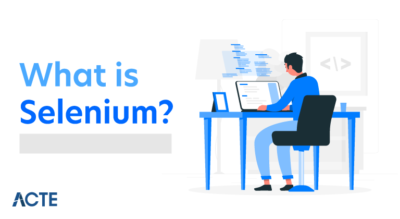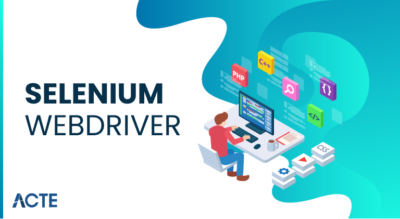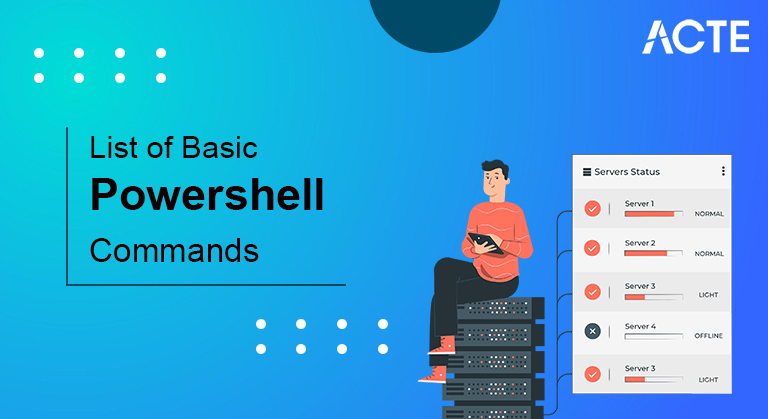
PowerShell is a cross-platform task automation solution made up of a command-line shell, a scripting language, and a configuration management framework. PowerShell runs on Windows, Linux, and macOS.
- Introduction to powershell commands
- PowerShell Commands List
- Features of PowerShell Commands
- How to Use Windows PowerShell
- Loading Up PowerShell
- What are the different ways I can run PowerShell as an Administrator?
- How to Run cmdlets
- The Essential PowerShell Commands
- Benefits of powershell command
- Conclusion
- Command Prompt
- PowerShell commands
- .NET Framework API
- Windows Management Instrumentation
- Windows part Object Model
- Command Name Alias Description.
- Set-Location cd, chdir, SL Sets this location for a selected location.
- Find-Content cat, gc, genre Finds content of associate degree object in a very fixed location.
- Add-Content ac Add content to fixed objects, like adding words to a file.
- Set-Content sc Writes or replaces content with associate degree item with new content.
- Copy-Object Copy, cp, cpi Copy associate degree object from one place to a different.
- Delete-Into del, erase, rd, ri, rm, rmdir Delete fixed things.
- Move-My object, move, mv Moves associate degree object from one place to a different.
- Set-Item si Changes the worth of associate degree item to the worth laid out in the command.
- New-Item metal Creates one thing new.
- Start-Job sajb Starts the background work of Windows PowerShell.
- Compare-Object compare, diff Compare 2 sets of things.
- Group-Items cluster things that contain a constant variety of fixed properties.
- Invoke-WebRequest curl, iwr, wget Finds content on an {online} page online.
- Object live Calculates the numerical properties of objects, letters, words, and rows of non parallel objects, like files.
- Resolve-Path rvpa Resolves wildcard characters on the means, and displays path content.
- Restart-Job rujb Restart the default perform.
- Fixed default set, sv Sets the variable price. Creates a variable if the requested name isn’t a gift.
- Show-Command shcm Creates Windows PowerShell commands within the image command window.
- Sort-Object kind objects by structure values.
- Start-Service sasv Starts one or additional suspended services.
- Start the method, begin one or additional processes on the native laptop.
- Suspending the pause performs Pause the flow.
- Wait-Job wjb Presses the command info till one or all of the Windows PowerShell backgrounds running the session are.
- Where-Object?, wherever Selects things in a very cluster supported their property values.
- Write-Echo output, write Sends the things mentioned within the next command within the pipeline. If the command is that the last command within the pipe.
- PowerShell is ideal for corporate executives who use complex management functions over large corporate networks. Instead of gathering information about hundreds of different servers and services yourself (which can take a long time), you can simply use the script in PowerShell to automatically back up information to you.
- In general, PowerShell is very useful for users with prior knowledge of command lines. To use PowerShell, you can use a variety of cmdlets, text, utility, and NET classes. For the purpose of this article, we will focus on cmdlets and texts to help you understand the basics.
- ACTE has a number of advanced courses in PowerShell that you may find useful.
- Press WIN + R, kind powershell, press Ctrl + Shift + Enter. Click okay to start as Administrator.
- Type powershell within the Taskbar search field. choose begin As Administrator from the list of choices within the right panel of the results list.
- Open electronic communication, kind PowerShell, and hit Enter. kind the method to launch the PowerShell -verb runas and press Enter.
- Also in electronic communication, kind runas / netonly / user: RemoteDomain \ Administrator powershell (enter RemoteDomain hostname or hostname)
- Find-Location – Get current directory
- Set-Location – Get current directory
- Move-item – Move file to a brand new location
- Copy item – Copy the file to a brand new location
- Rename – item Rename existing file
- New item – produce a brand new file
- PS C: \> Set-ExecutionPolicy
- To switch to RemoteSigned, sort the subsequent command:
- PS C: \> Set-ExecutionPolicy -ExecutionPolicy RemoteSigned
- Make sure you’re within the administrator account for permission to line a brand new usage policy.
- PS C: \> Get facilitate – Name of obtaining method
- PS C: \> Set-ExecutionPolicy
- Restricted – Default usage policy that stops documents from operating.
- All Signed – can use the text once signed by a trusty publisher
- Remote Signed – permits domestically created scripts to run
- Unlimited – Unlimited policy on victimisation scripts
- PS C: \> Get-ExecutionPolicy
- For example, if you were to type postscript C: \> Get Service, you’ll be shown an inventory of all the resources on your pc, their standing, and names displayed.
- To use this command for specific services, type: postscript C: \ Get-Service “WMI *” to uninstall all WMI-enabled services.
- If you wished to limit output to running applications on your pc, enter the subsequent command:
- PS C: \ Get-Service | Where-Object nine. standing -eq “Running”}
- PS C: \> Get-Service | Select-Item Name, standing | Export CSV c: \ Service.csv
- Find-Process
- If you would like to look at all the processes running in your system at once, the Get-Process command is extremely vital. For an inventory of all the processes that employment on your pc, type
- PS C: \ Get-Process
- Note that if you are doing not specify any parameters, you’ll get a separate method that works on your pc. to pick a particular method, slender down the results by {the method|the method} name or process ID and associate that with the Format-List cmdlet, that shows all out there options.
Introduction to powershell commands:
When it involves the practicality of the directions in Windows, PowerShell has become Associate in Nursing ace within the crack. For years lovers were restricted to the bounds of the Windows command however in 2006, PowerShell emerged as a strong variety. PowerShell may be a Command-Line Interface (CLI) interactive and automatic engine engine styled by Microsoft to assist design system configurations and perform management functions.
This tool has its own command with a special artificial language like Perl. Originally, PowerShell was designed to manage things on users’ computers. Today PowerShell provides users with a broad area wherever they will perform and perform system management tasks mechanically. Users will access resources from Active Directory to Exchange Server during a single program. At its core, PowerShell permits the user to access:
With PowerShell changing into open supply app, UNIX system and operating system users will currently access this multiplayer platform. PowerShell is widely accustomed to facilitating users perform automatic body tasks. rather than playacting oppressive and repetitive tasks, the user will merely produce texts and execute commands, and PowerShell can complete them mechanically. The user will customise many commands, known as cmdlets.
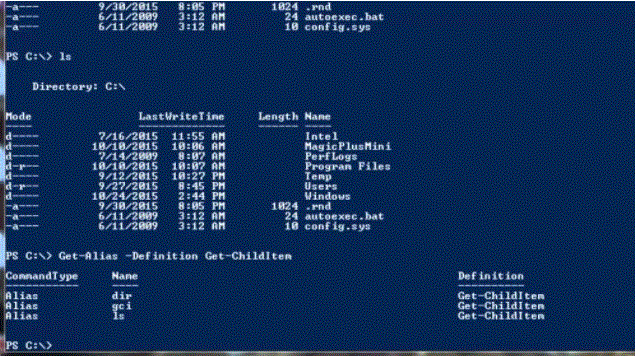
PowerShell Commands List:
Features of PowerShell Commands:
1. Windows PowerShell Workflow: Workflow power is introduced in version 3.0 of Windows PowerShell. It is specially designed to assist us in performing complex and time-consuming complex tasks on all different and multiple devices in different locations.
2. Required Configuration: DSC is a feature of Windows PowerShell that provides a collection of language extensions, resources, and cmdlets that can be used to customise the software by disclosure.
3. Background Activity: Windows PowerShell introduces the concept of background functions that use text and cmdlets interactively on the remote control of local devices without interrupting the user interface or connecting to the console.
4. Scheduled task: Similar to background work. Both of these functions perform harmoniously in the background without touching the visible connector, but the main difference is that the background functions are started automatically.
5. Error handling: Windows PowerShell provides an error detection method using Try {}, Catch {}, and Finally {} block as .NET language.
6. PowerShell Remote: This feature of Windows PowerShell allows the creation of cmdlets on remote systems that help manage a set of remote computers on a single machine.
7. Text debugging: It is a PowerShell feature to check text, function, command, or expressions while PowerShell is running. The PowerShell script debugger includes a set of cmdlets that allow you to set and manage intervals and view the call stack.
8. Tab extensions: The tab extensions are the default startup, which completes cmdlets, layouts, and parameter names by pressing the Tab button once.
9. Walkable Pipeline: This feature allows the division of script blocks into a treadmill pipe. It then offers the option to call start (), process (), and end () script block modes to control performance sequences.
10. Bound running spaces: This allows the creation of PowerShell spaces with a set of barriers that include the ability to access and use scripts, cmdlets, and language objects.
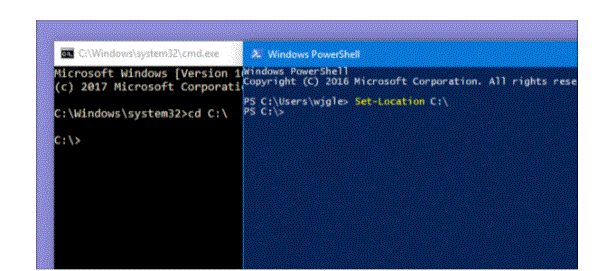
How to Use Windows PowerShell:
Loading Up PowerShell:
Before we can explore the basics of using PowerShell, you first need to access the main interface. If you are a Windows 10 user then you will already be able to access PowerShell 5. Windows 8-8.1 users have access to PowerShell 4, but if you are using Windows 7, you will need to install it within the .NET framework. Across all operating systems, PowerShell offers two different areas.
Most enhanced is the Integrated Scripting Environment, which serves as a comprehensive GUI for experienced users. Another basic method is the PowerShell console, which provides a command line for the user to enter his or her commands. Beginners are advised to stick to the latest ones until they learn the basics of PowerShell.
To launch PowerShell on Windows 10, you need to be an Administrator. Login as administrator, click Start, and scroll through your applications until you get Windows PowerShell. Right-click and select Start as administrator. In Windows 8.1, simply search for PowerShell in your System folder. Similarly, in Windows 7 the default PowerShell index is the Utilities folder after installing the application.
What are the different ways I can run PowerShell as an Administrator?
Note for choice four on this list:
Optional / netonly runas use user accounts for remote targets. So, during this case, you would like to use PowerShell as an Administrator on a laptop known as RemoteDomain. Administrator account works thereon remote device and not on a neighbourhood machine, so, once prompted, give the administrator account positive identification once prompted, not the administrator account positive identification on the native laptop.
How to Run cmdlets:
In PowerShell, most cmdlets ar coded in C # and embody directions designed to execute the .NET object. More than two hundred cmdlets are often used in PowerShell. The Windows PowerShell command isn’t sensitive, therefore these commands are often written in higher or grapheme. Larger cmdlets listed below:
For a whole list of commands you’ll be able to get, use the Get-Command cmdlet. At the instruction you may enter the following:
PS C: \> Get-Command
It is vital to notice that Microsoft prohibits users from exploiting custom PowerShell cmdlets in their default settings. To use PowerShell cmdlets, you wish to alter the ExecutionPolicy from Restricted to RemoteSigned. Remote language can permit you to run your scripts however will stop unsigned texts from alternative users.
To change your User Policy, sort the subsequent PowerShell command:
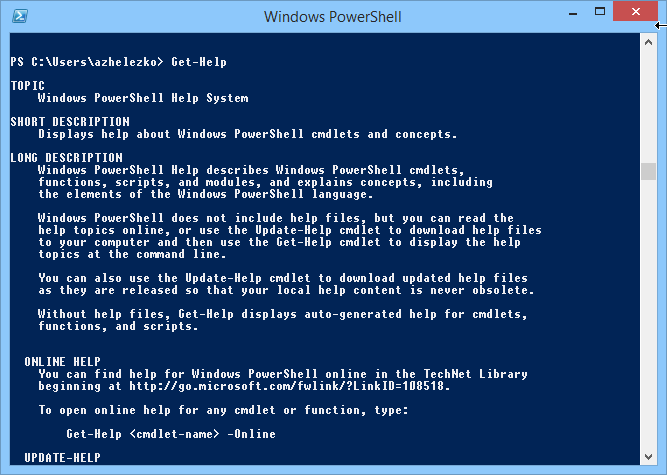
The Essential PowerShell Commands:
Using nicknames can get you to PowerShell to date, thus it is vital to learn all you’ll learn regarding PowerShell’s ancient commands. we’ve got touched on a number of the higher than, however we are going to separate the most ones very well below.
Get-Help
This command ought to be at the highest of the list for brand new users once it involves PowerShell. The Get facilitated command often wants to get real facilitated with the other PowerShell command. as an example, if you recognize the name of a command, however don’t recognize what to try and do or a way to use it, the Get facilitate command offers the total command syntax
For example, if you wished to visualise however the Get-Process works, you may type:
As noted earlier during this guide, Microsoft incorporates a restricted usage policy that prohibits writing to PowerShell unless you modify it. once fixing a usage policy, you have got four options:
If you’re victimising PowerShell, you’ll not perpetually be functioning on a server you recognize. Implementing the Get-User Policy command can allow you to see that policy applies to the server before implementing the new script. Once you see the server in question running beneath a restricted policy, you’ll then use the Set-ExecutionPolicy command to switch it.
Get-Service
One of the foremost vital commands is Get-Service, that provides the user with an inventory of all put-in, operational and organised resources. This cmdlet is often managed by victimisation specific service names or objects.
ConvertTo-HTML
If you’re victimising PowerShell, you’ll need to report the data you have seen. One of the most effective ways to try and do this is often to use the ConvertTo-HTML command. This cmdlet permits you to form reports by tables and colour, which may assist you visualise advanced information. simply choose an associate degree item and add it to the command. as an example, you’ll type:
Get-PSDrive | ConvertTo-Html
This returns plenty of data, thus it is a smart plan to limit it to a file with associate degree Out-File command. one in every of the most effective commands is:
Export CSV (and Get-Service)
Important for increasing the visibility of the Export-CSV command. permits you to export PowerShell information to a CSV file. In fact, this command creates a CSV file that features all the things you chose in PowerShell. Everything has its own line or line at intervals a CSV file. This command especially wants to produce spreadsheets and share information with external systems.
To apply this command, you’ll type:
PS C: \> Get-Service | Export CSV c: \ service.csv
It is vital to recollect that you simply will format things before victimising the Export-CSV command. This is often as a result of info objects leading to solely formatted formats enclosed within the CSV file instead of the initial objects themselves. Just in case you would like to export bound components of the thing to a CSV file, you’ll use the Select-Object cmdlet.
To use the Select-Object cmdlet, type:
For example:
PS C: \ Get-Process windows, soul | Format List *
This gives you complete management of all the running processes.
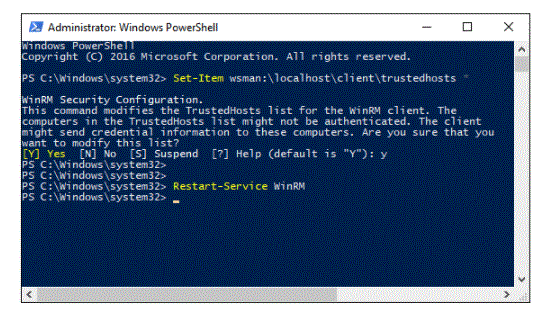
Benefits of powershell command:
Rich Cmdline based interface- COM == Developer experience NO management information. Managers are not program planners. Managers do not want to install a virtual studio to “manage” their servers.
Cmdline creates a good cycle between user and application. Unlike current typing engines, you can safely scan with cmdline to create scripts. And, without this interaction, controllers are lost when it comes to writing.
Highly secure text engine- PowerShell supports cert-based documentation and is automatically severely limited in functionality. PowerShell support group policy based on environmental management.
100% consistency between our interactions- Now that everything works with PowerShell in our administrative UI, users are assured that they see the same validation, errors, behaviour across the board. Consistency == users are happier. It is easy and very flexible to build user links as the business mindset is integrated without the user interaction layer.
100% default on all single management functions on Exchange- What we think should be default is different from what users expect. As PowerShell gives us an easy way to develop management software we can get 100% flexible and easier than ever.
100% automatic setting- Our set is based on PowerShell and is actually based on text. You can perform a complete Exchange light switch setting on the server using our setup.exe and PowerShell scripts.
Rapid development of component groups- We use the “self-help” model where each group on the Exchange builds their Cmdlets. This a) allows them to improve their feature management while recording the feature and b) allows for better feature management as the feature specialist builds Cmdlets. Users benefit from high quality, component groups actually “controlling” their features.
Better management testing- As component groups build Cmdlets while creating a feature, they can open a test team to test the feature using real code. In the past the GUI team was a long pillar in the ship’s cycle as it formed the management of the entire Exchange team. Part of the self-help models are groups that are “open” in the neck of the bottle and can begin their testing early.
Internal infrastructure development- Since everything related to management is 100% automated, our daily checks with BVT actually use PowerShell scripts as part of Exchange Exchange automation. This means that a small one-off code must be rewritten to automatically check the Exchange. It’s better together
We expect our administrators to use PowerShell to manage other services/products in the same way as Exchange — as PowerShell has a great model for integrating various products, it is much easier for our managers if everyone uses Powershell.
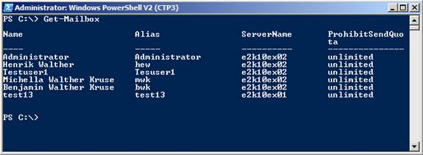
Conclusion:
learn a number of the fundamentals of operating with PowerShell, an instruction interface on Windows. You currently have the power to use PowerShell for many of the day-after-day running tasks on your pc, and that i would suggest exploitation simply that. At first, you’ll realise it is terribly troublesome to repeat a file and move it to a replacement directory from the instruction, however the more you apply it, the more natural it’ll become. Eventually, you may be far more snug operating in PowerShell, and you may be ready to perform several tasks in a lot of simply this fashion.
Although we’ve had a glimpse of what PowerShell will do, you currently have enough basic data to find out a way to do a lot. Their square measures several helpful resources online, and it’s for you to google! it’s conjointly useful to grasp that almost all discussions concerning exploitation the instruction are supported UNIX operating system and alternative * goose egg programs. In most cases, as long as you sort within the instruction words and “PowerShell” within the program, you may get a compatible PowerShell cmdlet.
A lot of you utilise PowerShell, the better it’ll be, and therefore a lot of you may learn to unlock the talents you probably did not even grasp your pc had! Finally, you will see how compelling your interface was. you may not stop exploiting it, however, you may end up beginning PowerShell usually to interrupt free from these problems, and alter the use of your pc. Your pc is sort of a pocket knife. The interface solely permits you to open a number of blades. With the instruction, you’ll be able to open all of them

